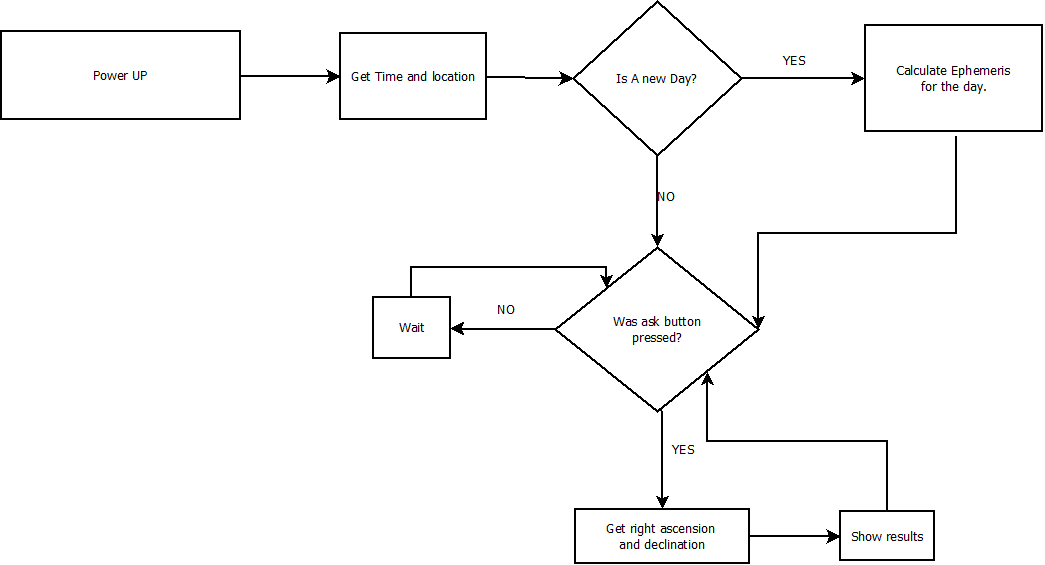-
It's full of stars...
08/19/2014 at 20:53 • 0 commentsIn a previous log a talked about using the bright star catalog as a the base for the calculus of star position. This is a very complete catalog that has too much information, that would take to much space in an enbebed solution. To my project I just needed the Harvard Revised Number to identify the star, the Right ascension and the declination, and the visual magnitude. To clean up the file to my needs i used the following bash code:
grep . bsc5.dat |awk '{print substr($0,1,4)";"substr($0,5,10)";"substr($0,76,15)";"substr($0,103,5)}' > cleaner.csvWhat this does is "grepping" the original file line by line, run by awk to get the desired substrings and place the output of the operation in the destination file.
The next step is to start to calculate.... still rusted....
-
First Code!
08/18/2014 at 17:30 • 0 commentsI have added to my Github page my first code. Its a simple code co convert a Gregorian date to the correspondent Julian Day (JD). This is used to calculate an ephemeris based on a determined epoch. I'm feeling the coding rust going away...
-
The calculus basis
08/17/2014 at 15:49 • 0 commentsIn order to calculate the position of a star in the nightly sky, we need to agree to an epoch and use a catalog that contains the position of the stars at the chosen epoch. For my project I will use epoch J2000 and the Bright Star Catalog. This catalog contains 9110 stars with magnitude greater than +6.5, meaniing that are visible to the naked eye. This number is too large to our application, since the laser just gives us a coarse position in the sky. The first tests will be made with a list with a number of stars one or two orders of magnitude lower.
-
Calculating odds
08/13/2014 at 20:31 • 0 commentsBefore advancing with the coding and deciding which microcontroller to use, I'm taking some time to refresh my astronomy notions, in particular, the algorithms needed to calculate the positions. I hope to have some code soon for calculate planetary position.
-
The Logic behind
08/06/2014 at 20:04 • 0 commentsIn this project log I want to explain the logic behind the operation of the astroscopus. Bellow is a flowchart with the operation mode of the device. These are my preliminary ideas that can change with the progress of the project.
On power up the device uses the GPS module to find the current time and location. Given that on the same day (i think..) that there are no large variantions of the ephemeris table, we calculate once every 24 hours. After this phase we wait for the aks (futurama ask) button to be pressed. If the button is pressed, we find the RA/DEC using the inclinometer and the magnetometer.
I think the basic idea is clear, but I hope this schmatics helps.
-
OK lets start... I guess
08/06/2014 at 19:28 • 0 commentsThis first project log I will use to explain the basis of why I think my project will work outside the box called cranium.
Anyone that love astronomy, or simply stargazing, knows that one of the best ways to point someone a star is using a green laser pointer. There are commercial products (Celestron SkyScout) that are use for star-finding, that comprise a viewfinder with a cross-hair, which can identify the celestial body. However this solution is a bit "selfish" because only one can use the device at one point. I want with this project to combine both ideas, allowing a more pleasant experience, even for a group. I take in account some safety measures such suppressing the laser usage near airports, and a key operated switch to provide some child protection.
This is my first project log, in the next one I will try to have already chosen the micro controller and the why of the choice
